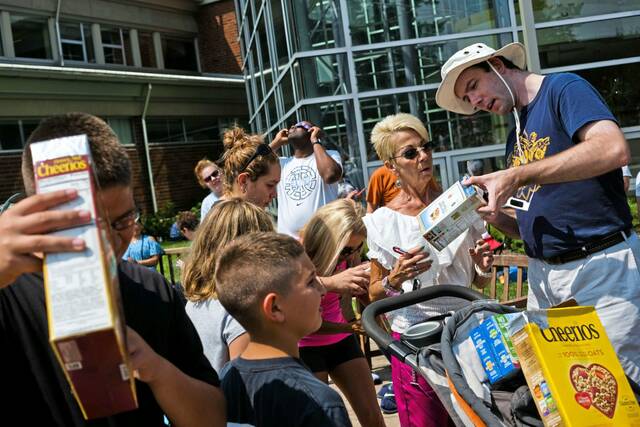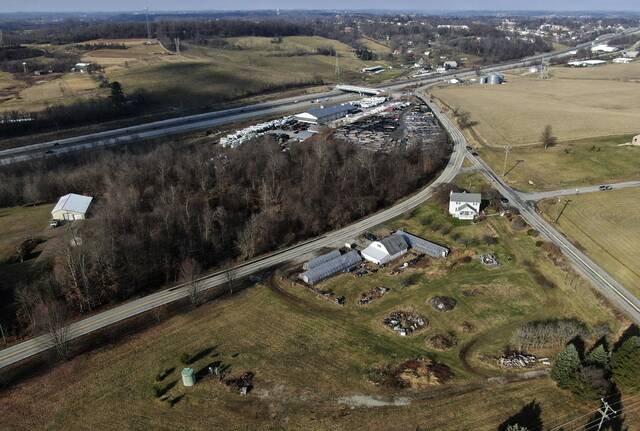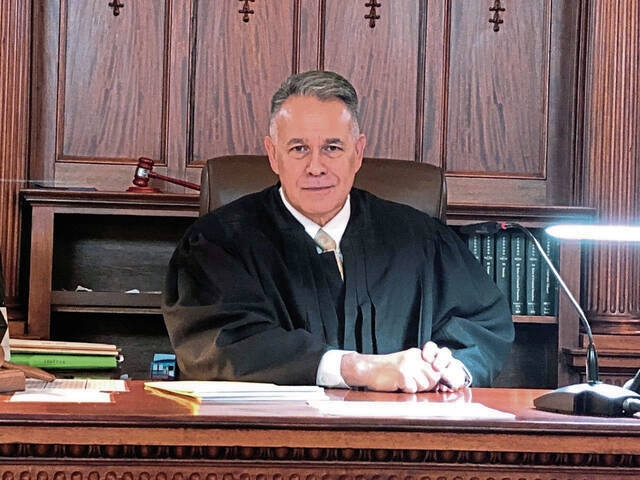While people gather at Saint Vincent College Monday to watch the solar eclipse, a group of students from the college will be watching for muons.
A group of about 15 students from the Unity campus will drive north Monday morning to Erie’s St. Mark’s Seminary, where they’ll witness the eclipse’s totality and will set up equipment to study the celestial event’s possible effects on subatomic particles.
Muons are part of a cosmic shower of such particles that is created when high-energy particles from space collide with the Earth’s atmosphere.
“They’re like an electron but about 200 times heavier,” the Rev. Michael Antonacci, an assistant Saint Vincent physics professor, said of muons. “They have 200 times the mass, but they’re very weakly interacting with other matter.”
Traveling at close to the speed of light, muons are one of the few particles that survive long enough to reach the Earth’s surface, Antonacci said. They pass through humans before penetrating up to a mile into the planet’s crust; for the most part, they’re not a problem.
“But they’re energetic enough that, sometimes, if you’re really unlucky, they’ll hit a DNA molecule and (mutate it),” according to Dan Vanden Berk, associate professor of physics at the college.
Antonacci and Vanden Berk will join the students on the physics club trip as they make a count of the muons that reach their observation post in Erie during the eclipse.
“We’re learning with the students as we go along,” Antonacci said. He noted there has been limited research on the potential effect of an eclipse on muons.
The Saint Vincent group also will take readings to see how factors such as temperature, humidity and magnetic field strength may vary during the stages of the eclipse.
Students and faculty at the college have studied muons for about five years as part of a cosmic shower detector array project. Their equipment has grown from a pair of detectors to 14.
“All of them have been built from scratch by students or faculty,” Antonacci said.
The Erie observations will add to the project’s database — providing more information about the capabilities of their detectors and about muons.
“This is one step along the way,” said Antonacci. “Our end goal is to build an array of these detectors as a way to study that initial high-energy (atmospheric) interaction.”
Sharing the view
Saint Vincent is welcoming the public to its Sis and Herman Dupré Science Pavilion Monday afternoon to view the solar eclipse. All ages are welcome, and reservations aren’t required.
The free event will run from 2 to 4:30 p.m. As seen on the campus, the eclipse is slate to peak at about 3:18 p.m., with the moon covering 96% of the sun.
Members of the Saint Vincent physics department will help those attending safely view the eclipse with projectors and telescopes equipped with solar filters. Free protective viewing glasses will be distributed while supplies last.
NASA’s live coverage of the eclipse also will be shown.
The college hosted a similar eclipse-viewing event on Aug. 21, 2017, when those present were able to see the moon obscure 80% of the sun.








